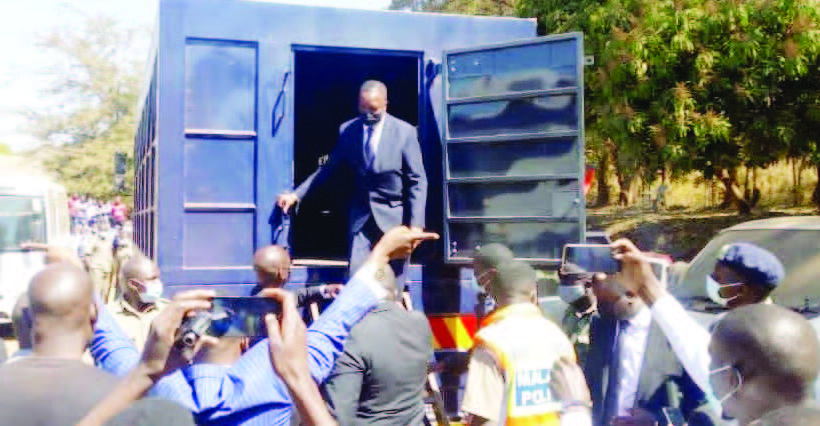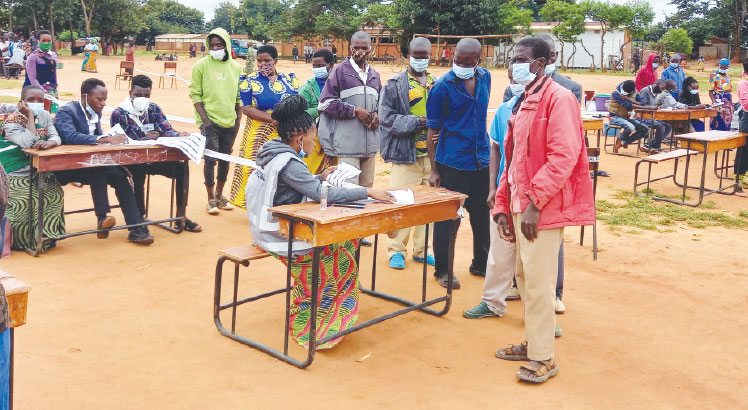‘Symbolism at centre of Malawi’s economic plan’
 The Joyce Banda administration on Friday chose symbolism over substance to tackle the historic fiscal crisis, leaving firms and households searching for clarity over Malawi’s economic course.
The Joyce Banda administration on Friday chose symbolism over substance to tackle the historic fiscal crisis, leaving firms and households searching for clarity over Malawi’s economic course.
In announcing a 30 percent salary cut for the President and Vice-President while postponing tougher austerity cuts across government’s vast non-core spending spectrum, the administration may have signalled the presidency’s eagerness to suffer with everyone, but the move does little to end wasteful spending in the public service.
On Friday, Vice-President Khumbo Kachali, who announced the presidency’s sacrifice at the Bingu International Conference Centre in Malawi’s capital, Lilongwe, during the official launch of the second Malawi Growth and Development Strategy (MGDS II) and the Malawi Economic Recovery Plan (Merp), said more spending cuts will be announced later.
“In support of the austerity measures, the President and Vice-President have voluntarily decided to reduce their monthly salaries by 30 percent with immediate effect,†said the Veep.
Kachali, who acknowledged the tough economic situation at the moment, also said government is actively considering other cost-cutting measures to be announced in due course.
But after reneging on the decision to get rid of Cabinet Ministerial Mercedes Benz and reduction of the presidential motorcade, cynics could be forgiven for thinking that little action could come out of the Banda administration’s rhetoric.
“It is a good gesture [for the President and her deputy] to cut their salaries by 30 percent. This shows they are leading by example. But the austerity measures have to apply across the board without sparing anyone, though they have come too late,†said Malawi Economic Justice Network (Mejn) executive director Dalitso Kubalasa.
 He added: “We hope similar considerations will also follow to cut the salaries for Cabinet ministers and their allowances and that could send a comprehensive message to all that government is walking the talk. We should now talk of real implementation because plans, policies and strategies have been there, but have been gathering dust. We want the plan to translate into real action. Are we going to do things differently this time around?â€
He added: “We hope similar considerations will also follow to cut the salaries for Cabinet ministers and their allowances and that could send a comprehensive message to all that government is walking the talk. We should now talk of real implementation because plans, policies and strategies have been there, but have been gathering dust. We want the plan to translate into real action. Are we going to do things differently this time around?â€
The choice of symbolism over substance may look even more ineffective when read together with the Merp that is malnourished by a lack of new ideas, yet government expects it to turn around the economy over the next 18 months.
The cost-cutting symbol and the launch of the Merp and MGDSII come at a time government is trying to re-set the economy on the growth path through a number of various economic reforms contained in the 2012/13 national budget.
It also follows outrage on the presidency’s frequent internal and external travels with entourages many say are too large for the country’s tattered public purse.
Just last week, Malawians were outraged to learn, through an exclusive story published by The Nation, that the President’s three-week trip to the United Nations (UN) in New York with a 40-plus entourage, cost taxpayers K308 million (about $1.03 million) largely through allowances and air tickets.
In recent weeks, donors—particularly those who provide budgetary support under the umbrella of Common Approach to Budgetary Support (Cabs), have issued coordinated statements calling for expenditure cuts and sacrifices by every Malawian, including “the privilegedâ€, to put the country’s fiscal house in order and resuscitate the economy.
Policy reforms
In his keynote speech, Kachali stated that using the recovery plan as an instrument to ‘rejuvenate’ the economy, government has already implemented a number of policy reforms, particularly in the monetary sector, such as the adjustment of the exchange rate.
He said with reforms in place within a short time, government has managed to start bringing back the much needed foreign currency in the economy which, he argued, has helped the country to freely import strategic commodities such as fuel, drugs and other raw materials for industries.
Kachali said the fight against corruption will continue and government is “committed to addressing this scourge, which is eroding the country’s economic gains.â€
He admitted that government continues to lose billions of kwacha through fraud and corruption in various sectors and described such a situation as disappointing to government and also those who wish Malawi well.
In his address, Minister of Economic Planning and Development Atupele Muluzi said the launched plan will be implemented in the context of MGDS.
 “In this regard, budgetary allocations will be aligned to economic growth sectors, but without losing focus of the social needs of the country,†said the minister.
Salary cuts to show commitment
Later, at a press conference, Finance Minister Dr Ken Lipenga, who was accompanied by Muluzi, said the idea behind the 30 percent cut is “not necessarily to save moneyâ€, but to demonstrate commitment and sacrifice at individual level.
Said Lipenga: “There will be savings, but not necessarily huge to make a huge difference. But we do need to demonstrate that at individual level, we can make a sacrifice. The point is that there will be no sacred cow.â€
He also emphasised that President Banda is determined to reduce her convoy and hinted that soon she will be announcing other cost-cutting measures.
Financial market analyst Chikavu Nyirenda, who is also chief executive officer at Alliance Capital Limited, concurred with Lipenga that the main message is that the two leaders are leading by example.
“Why can’t we make some sacrifices? We have to lead by example. Donors have also of late been talking about the need for government to make some sacrifices. I think as a listening leader, this is a good example and everybody should also do likewise,†he said.
Friday Jumbe, Malawi’s former finance minister who is currently president of opposition UDF, also commended the move, saying in hard times where everybody is suffering, leaders must share the suffering.
The recovery plan has since identified five strategic sectors of energy and mining, tourism, agriculture, transport infrastructure development and information communication technology (ICT).Â





